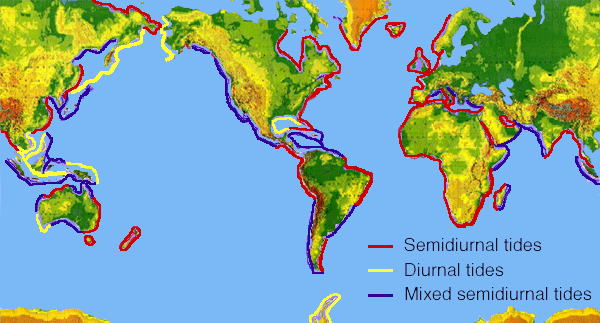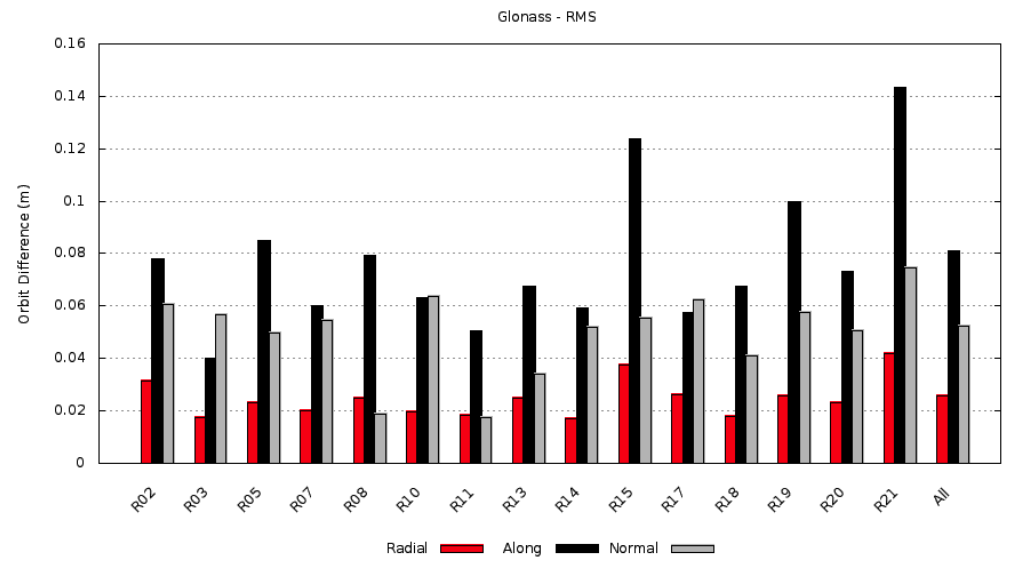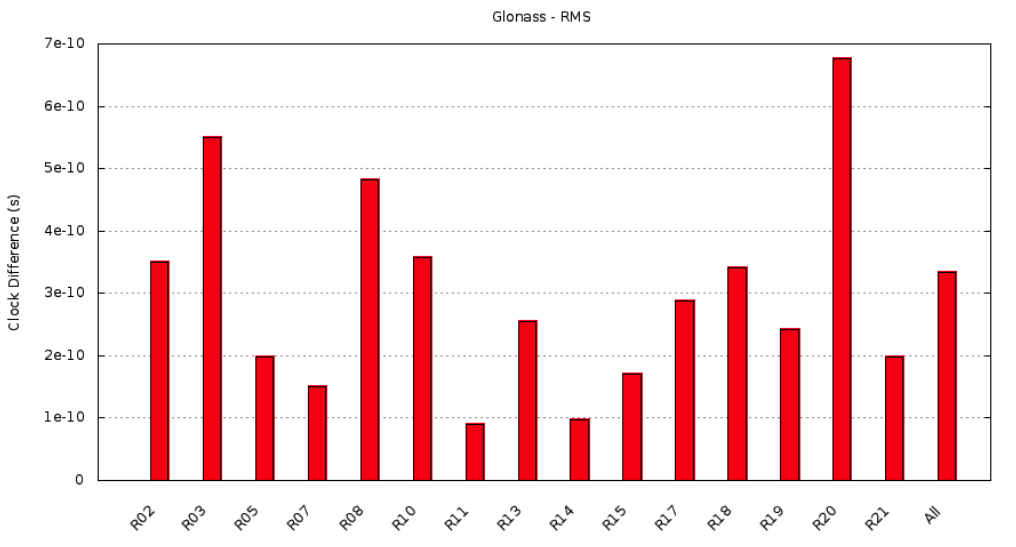February 9th, 2010 by Ricardo Píriz
The Russian navigation system GLONASS seems to be in very good shape again. Since February 4, eighteen (18) satellites are continuously available for dual-frequency Precise Point Positioning (PPP). Now it is possible for example to monitor the behaviour of a very stable atomic clock connected to a GNSS receiver, using GLONASS measurements exclusively, without GPS.
We have processed in PPP data from the svtl station near Saint Petersburg in Russia. This station is connected to a hydrogen maser. Station measurements were taken during February 5. The GLONASS orbit and clock products needed for PPP have been generated internally and are available in magicGNSS. The following figure shows the resulting PPP pseudorange (code) and phase residuals, for the 18 GLONASS satellites.

Pseudorange (code) and phase residuals from PPP
Read the rest of this entry »
Posted in Announcements | Comments Off on Precise Point Positioning with GLONASS: 18 satellites now available
January 19th, 2010 by Ricardo Píriz
This information is deprecated, please visit the new post.
We have just released magicGNSS version 2.2 which incorporates a new version of the Precise Point Positioning algorithm (PPP). The new PPP is able to process the Russian satellite constellation GLONASS.
GLONASS satellite orbits and clocks needed as input by PPP have been calculated offline using the ODTS module of magicGNSS. GLONASS orbits and clocks are available starting January 1, 2010, with a latency of around 1 hour. The new PPP has three processing modes: GPS-only, GLONASS-only, and GPS+GLONASS. It is also possible to do GLONASS PPP by email.
magicGNSS/PPP with GLONASS was presented and demonstrated at the ION GNSS 2009 conference in Savannah, Georgia, USA. The title of our paper was Orbits and Clocks for GLONASS Precise-Point-Positioning.
Posted in Announcements | Comments Off on (Deprecated) Precise Point Positioning with GLONASS
January 18th, 2010 by Álvaro Mozo
Ocean loading is the deformation of the Earth due to the weight of the ocean masses. The water in the ocean moves due to the gravitational pull of the Moon and the Sun (this is the tides), and causes the Earth, which is not completely rigid, to deform according to the varying load of the ocean’s water. The deformation is periodic, following the relative motion of Earth, Moon and Sun, however such relative motion is rather complex and thus periodicity has to be represented with several harmonic terms of different period.

Periodicity of tides around the world (graphic from NOAA)
Most commonly, the 11 first terms (i.e. those with higher amplitude) are retained to model this effect.
Ocean loading can be perceived as a periodic displacement of the station position (especially in coastal areas), as well as a periodic variation of the Earth’s gravity.
How is ocean loading taken into account in magicGNSS?
Read the rest of this entry »
Tags: Algorithms, ODTS
Posted in Tips & Tricks | Comments Off on Ocean loading
January 13th, 2010 by Ricardo Píriz
Three new GLONASS satellites were launched last December 14. Their orbital slots or PRN numbers are: 01, 04, 05. Number 05 (R05) has been declared operational on January 10 (see the GLONASS constellation status).
Since version 2.0 magicGNSS is able to calculate GLONASS satellite orbits and clocks using the Orbit Determination & Time Synchronization algorithm (ODTS). 15 Russian satellites can currently be processed in ODTS, from a total of 16 operational ones (R19 cannot be processed because it only transmits in L1). The following plots show our GLONASS orbit and clock estimation accuracy (actually precision or internal consistency), from comparing overlapping ODTS arcs.

GLONASS orbit accuracy

GLONASS clock accuracy
Posted in Announcements | Comments Off on New GLONASS satellite now operational
November 20th, 2009 by Ricardo Píriz
The PTTI conference finished today. Here is our presentation. This is a photo of our booth at the Exhibition:

Posted in Announcements, Events | Comments Off on At the PTTI








